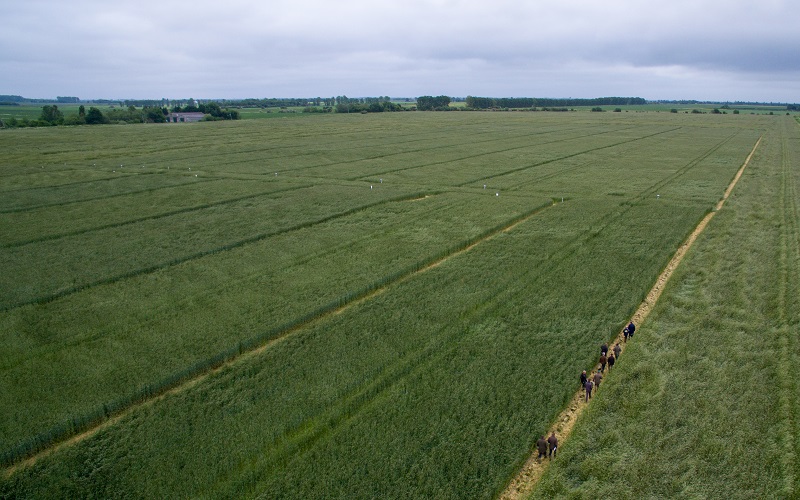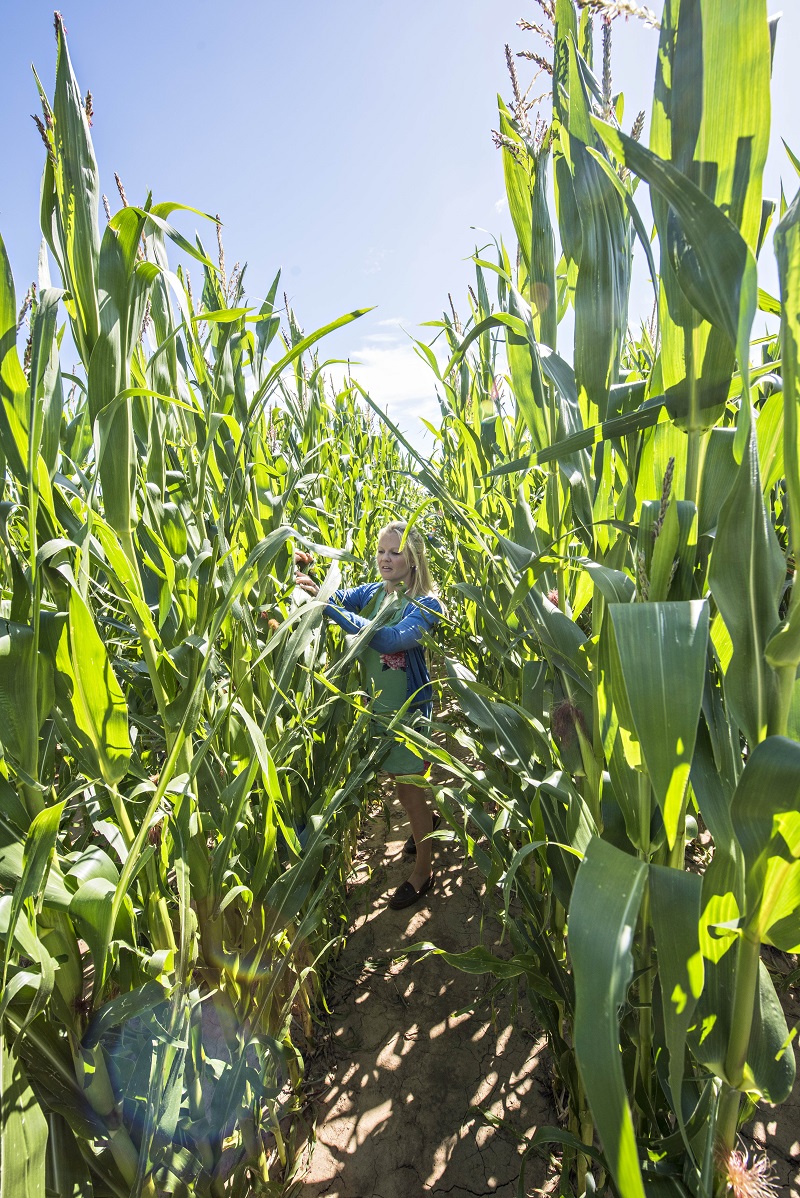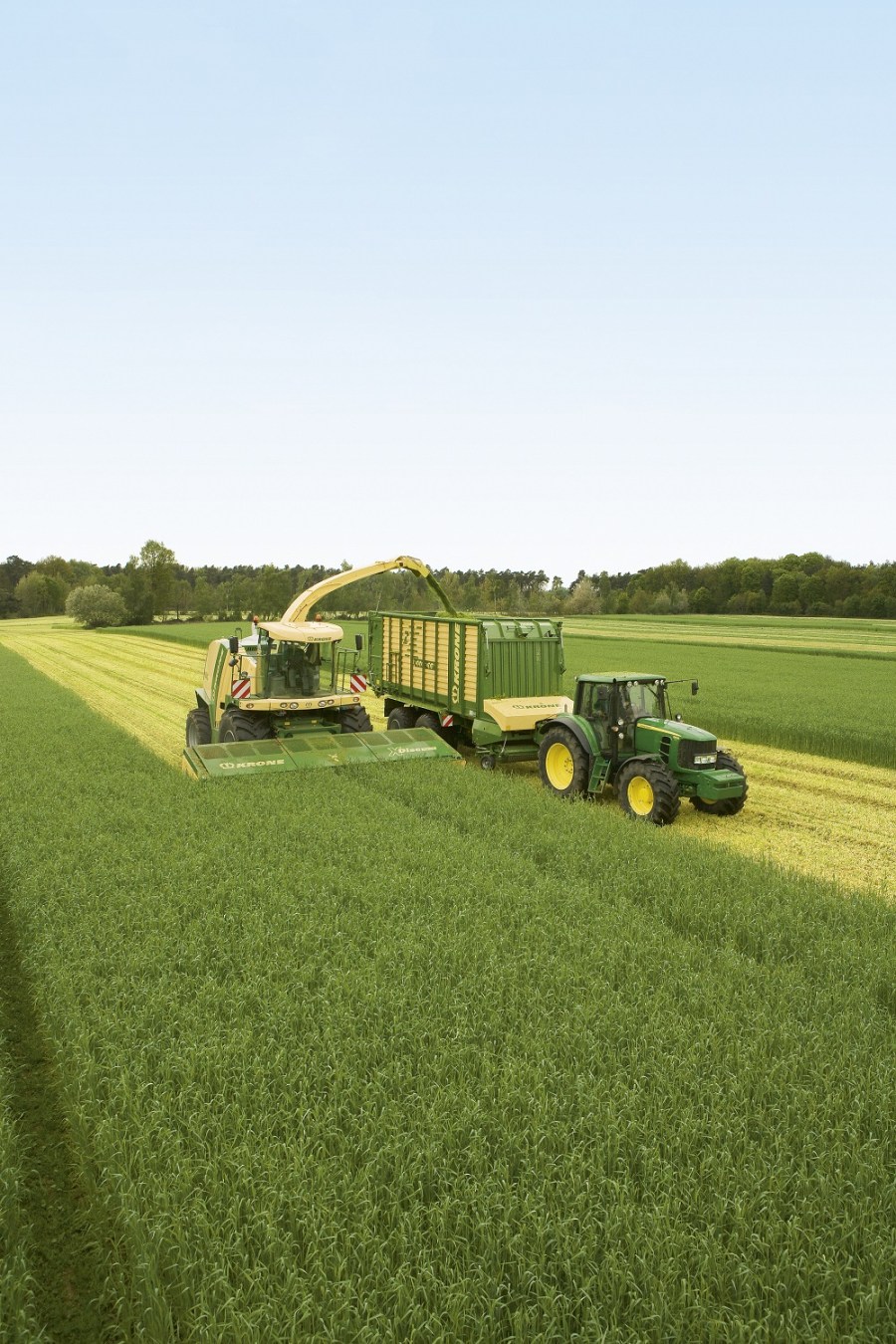Trials results have shown hybrid rye has put in a strong performance this year. CPM reports.
By Tom Allen-Stevens
New hybrid rye varieties have made strong advances in 2016 trials, both in the UK and in Germany, in spite of a difficult growing season. The wholecrop performance of leading varieties grown for anaerobic digesters now rivals maize and hybrid rye should be considered as a valuable addition within an energy crop rotation, according to Elsoms Seeds.
“This year has seen a slight decrease in wholecrop and grain yields for commercial hybrid rye crops,” reports the company’s Jonathan Baxendale. “But Saaten Union varieties have stayed at the top of the data tables, and looked well in all field trials.”

Saaten Union varieties have performed particularly well across UK and European hybrid rye trials
SU Performer is the high yielding star for 2016, adds Elsoms’ Heather Oldfield. “It topped the German official winter rye trials, while harvest results from AHDB Recommended List winter rye Descriptive List trials put the variety eight points ahead of the site mean.”
This high grain yield is reflected in the variety’s wholecrop performance. Preliminary results from official German winter rye trials put SU Performer top at 106%, in terms of average dry matter (DM) yield.

When maize is mixed with a wholecrop cereal, it should produce the maximum amount of methane yield per ha, says Heather Oldfield.
Across Elsoms UK trials network and in independent UK trials, SU Performer’s wholecrop yield has been equally strong, reports Heather Oldfield. “Our Crowland site in South Lincs puts varieties to the test in a high blackgrass situation, with large-scale plots to replicate on-farm scenarios,” she explains.
“The site was foraged on 22 June – about 10 days too early for hybrid varieties – to suit the Generator conventional rye grown on the rest of the farm. But SU Performer still came out on top at 107% of site mean, in terms of adjusted DM yield. This is a shade ahead of SU Cossani, which is another promising candidate variety from the same breeder.” Tests carried out on samples of blackgrass seeds taken from the Crowland trial showed they didn’t germinate, she adds.
David Leaper of Agrii, who’s visited the site, was impressed at how the hybrid varieties performed in the large strip trials under high blackgrass pressure. “To top it all, we’re seeing some really encouraging gains in brown rust resistance,” he notes.
This is a feature also picked up by Craig Green of Agrovista. SU Performer and SU Cossani came out first and second at the company’s Great Ellingham trials in Norfolk, yielding 32t/ha and 31t/ha respectively (adjusted to 32% DM). “SU Cossani has been the cleanest rye this year with the strongest tiller ability in the spring, making it very competitive and suitable to lighter land,” he says.
“SU Performer with its stiff stem, good disease resistance and prolonged growth, preferred the better bodied soil – it could be visually picked out as a strong plant at the beginning of stem extension. SU Cossani captured any nitrogen left over in the soil during the autumn before all the winter rain, with the most notable effects seen on the lighter land.”
Drilled following a winter cereal crop, the hybrid rye received 100kgN/ha, but looked hungry towards the end of the season due to the wetter than normal conditions. “The learning points we took away included the importance of early N application as soon as you can travel in Feb to build and retain tiller numbers,” he notes.
The UK and European trials, along with field experience, have highlighted a number of key points in the agronomy of hybrid rye, continues Heather Oldfield. “The best time to drill the crop is 15 Sept, with a sowing rate of 2.5 units/ha. This should be increased by 10% every 10 days thereafter to achieve maximum yields. After late Oct, it’s more financially viable to switch into triticale or conventional rye, depending on conditions.”
Rye has a weaker coleoptile than wheat and barley so shouldn’t be drilled any deeper than 2cm, she adds. “The crop begins growing at far lower temperatures than other cereals, so apply fertiliser as early as possible in the spring – Feb is ideal, should conditions allow. The yield plateaus occur for hybrid rye at approximately 180 kg N/ha.”
In the digester, wholecrop rye has been shown to ferment at about the same rate as maize, with a similar starch to cellulose ratio. “When maize is mixed with a wholecrop cereal, it should produce the maximum amount of methane yield per ha,” says Heather Oldfield. “European growers and AD managers’ report that this combination provides a higher yield per tonne of input material than maize fed on its own.”
Elsoms Seeds and Saaten Union have been screening a number of maize varieties in the UK over recent years. “Following this process we now have a full range of maturities we can confidently bring to the marketplace for planting in 2017. Sulano, with an FAO of 210-220, looks particularly well again this year,” she adds.
Colin Button of Hutchinsons has visited the maize variety trials and agrees the variety shows promise. “There’s a strong growth of biomass and cob production and seemingly not too late a maturity at FAO 220. I’m sure we’ll be incorporating this into our trials for 2017,” he says.
Feedstock comparison





